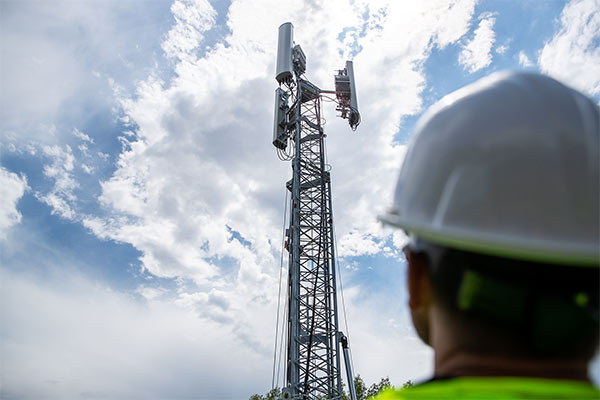Play all audios:
DISH NETWORK CEO IS ALSO LEAVING ECHOSTAR MERGER NEARS COMPLETION As the company reinvents itself to be a mobile network operator augmented by satellite capabilities brought in by EchoStar,
Dish Network stock plummeted to a 25-year low following weak Q3 earnings. The Wednesday earnings call, which started late and did not include any prepared remarks, saw Chairman Charlie Ergen
give a mea culpa around marketing of Dish Wireless. “Are we doing a great job of marketing?” Ergen said. “The answer is no. The messaging didn’t have quite the desired effect…We’re not
hitting on all cylinders there.” Discussing its shrinking retail footprint and go-to-market partnership with Amazon, Ergen said the goal there is provide an online storefront that provides a
better customer experience than what could be had in a brick and mortar location. “We’re a little ahead of our skis,” Ergen said, “but we’re failing fast and we’re learning. I think
strategically…we’re on the right side. Any criticism on the marketing side is well received here…We know the messaging has to be fine tuned.” To the EchoStar of it all, the merger is
expected to complete on Nov. 13. This week Dish Network CEO Erik Carlson, a 28-year veteran of the company, said he was exiting when EchoStar CEO Hamid Akhavan takes over the combined
company. In the third quarter of this year, Dish Network posted a net loss of $139 million whereas in the same quarter last year the company reported net income of $412 million. The pay TV
business lost 64,000 subscribers in Q3, compared to a net add of 30,000 subs in Q3 2022. The company had a net loss of 225,000 wireless subscribers in Q3, compared to a net increase of 1,000
in year-ago quarter. Dish Wireless has 7.5 million wireless subscribers. Full financials are available here. Dish’s stock price is down 28.9% this month and dropped from $5.49 per share on
Friday last week to $3.64 per share after the market opened today (Nov. 7). Earlier this year Dish met an FCC mandate to cover 70% of the population with its 5G Standalone network which
was built with a multi-vendor, Open RAN architecture in mind. The company has MVNO agreements in place with AT&T and T-Mobile US. The company has focused messaging on the enterprise 5G
opportunity as a revenue growth driver. Asked about the outlook for enterprise 5G, Ergen said, “There’s lots of activity,” and highlighted a brighter outlook once the EchoStar merger is
completed, and Dish has access to that firm’s enterprise salesforce, relationships, and cross-sell from combined terrestrial and non-terrestrial connectivity offerings. As more commercial
devices with support for Dish’s spectrum combination become available and the company expands its native coverage footprint, Dish is looking forward to more advantageous economics with an
eye on June next year. COO John Swieringa sketched it out. The network today covers 120 million points of presence with which is slated to increase to 240 million by June. He said there’s a
lot of focus on getting out compatible devices—today, he said, about one-third of customers use a device that works on the 5G Standalone network; the expectation is that two-thirds of
customers will be on Dish’s network by June. At the same time, that decreases payments for the MVNO arrangements with AT&T and T-Mo. “Those three things together really sort of change
the trajectory of the retail business,” Swieringa said.

